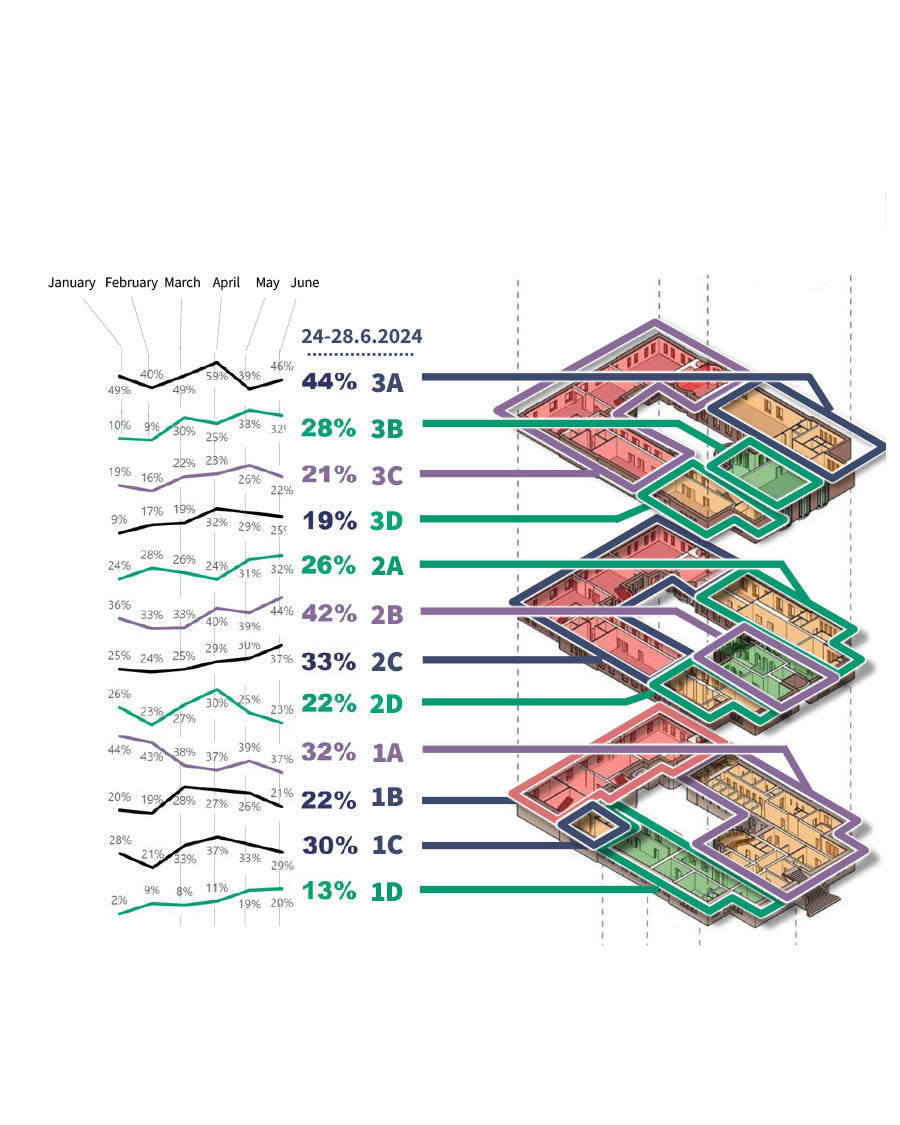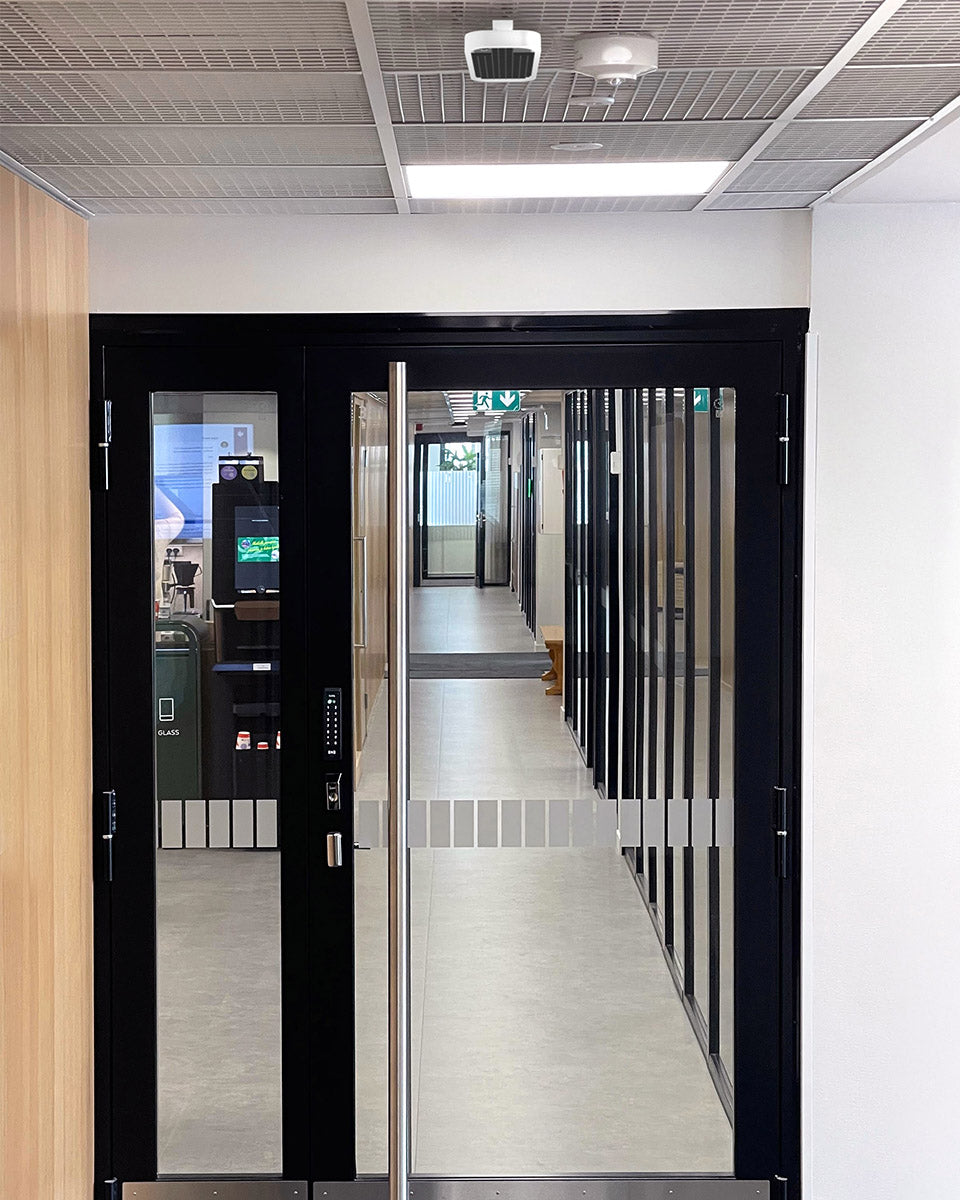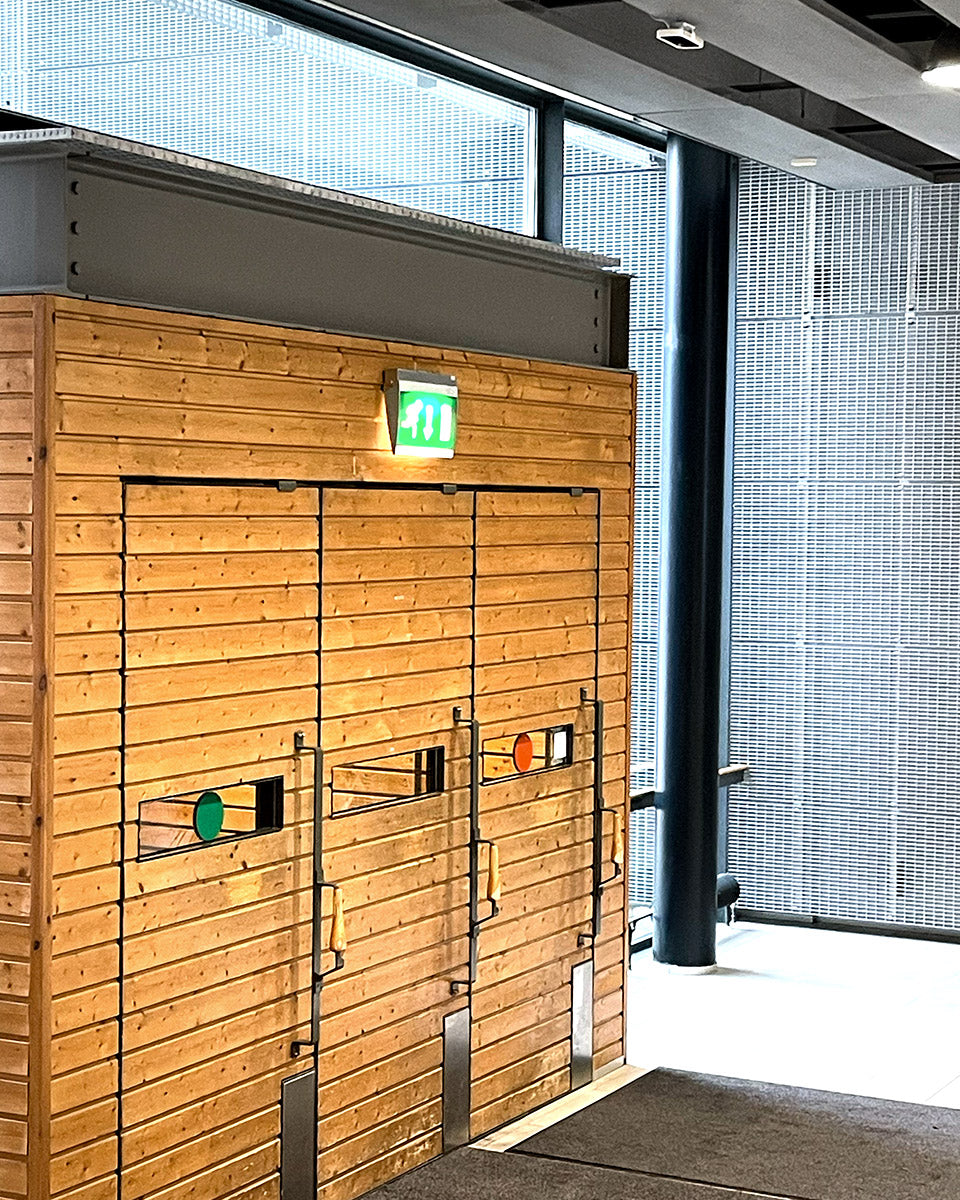
The only precise solution for space analysis on the market
During the day, people enter and leave the buildings several times, which multiplies the counting error. If the accuracy is low, the occupancy rate cannot be measured reliably.
An office building with a maximum of 300 people a day may have an average of 600 entries and 600 exits per day, or 1200 counts in total. The best traditional counters are capable of 95% accuracy, with a count error of 60 persons per day too many or too few, giving a count of 240-360 persons. With the 99% accuracy of the technology we are developing, the maximum error in that count is 12 persons.

A Breakthrough: the most accurate technology in the world
During the day, buildings are entered and exited several times and the calculation error is multiplied. With lower accuracy, occupancy cannot be reliably measured.
Our 99% accuracy in people counting is the most accurate in the industry, developed on the world's fifth fastest supercomputer in partnership with the world's leading research institutions.

Superior accuracy with high security saves millions in buildings
The innovative technology we have developed transforms a smartphone into an easy-to-install smart sensor above a doorway. The solution has the highest cybersecurity and privacy protection on the market. Installation in 30 minutes with voice control by artificial intelligence.

Total privacy protection
We are the only counting service provider whose sensors are FIPS 140-2, 140-3 certified by the US government. Further also KATAKRI certified by the Finnish National Security Authority.
No personal data is processed or stored and therefore no personal register is created under the GDPR.

View the utilisation rate in real time with the mobile app
Visualised in Microsoft Power BI for further analysis. Weekly executive summary of the reporting by email as a pdf report.

Automated utilisation rate as a service
The number of persons in the area is calculated by subtracting the total number of persons leaving the area from the total number of persons entering the area. The utilisation rate is calculated as a percentage of the maximum capacity defined for the area. The utilisation rate takes into account the defined periods of days and times of day during which the number of persons in the premises is averaged, e.g. "weekdays 08:00 to 16:00". For the selected period, first the average of each hour is calculated and then the average of the hours over the period. We ensure the 24/7 automated counting.

Billions of euros wasted
on empty office space. In Europe and United States only 31-36% of office space is in efficient use, but exact data of each building has not been available. A total of more than €1,000 billion, or €1 trillion a year we can save for our customers.

40% energy emissions
come from the built environment and 50% from raw materials. The billions in cost savings from buildings is also a huge opportunity to prevent climate change.

Billions recycled smartphones
transformed to smart sensors with our mobile app with the highest security and privacy protection on the market.
100% privacy secured people counting
-
The system does not collect personal data
Edge computation:
to ensure complete privacy protection, the AI model is run as an edge computation on a mobile phone, where no personal data is stored or transmitted.
Real-Time Inference Without Storage:
The AI model performs object detection by processing each video frame on the fly, identifying and counting objects (people) within milliseconds.
Object recognition process without personal data:
the AI model has been trained with training material including only photographs of annotated shapes of people, which are fully anonymised.
The solution does not process or store any personal data and should not be subject to the General Data Protection Regulation (GDPR).
-

We are committed to the principles of the UN Global Compact.
We are confident that artificial intelligence will bring significant benefits to the well-being of both individual and society, and we want to be putting those benefits into practice. Artificial intelligence enables the production of technology, products and services for society as a whole in a safe, efficient, reliable and value-adding way. At the same time, we also recognise the responsibilities that come with collecting data and using automation. It is important for us to act responsibly, ethically and legally in all situations.
People must always be treated fairly and equitably. When we offer artificial intelligence as a tool for decision-making for our customers, our goal is to create fair and equal opportunities.
Artificial intelligence systems should be used to enhance positive social change and sustainable and ecological responsibility. We want to put this into practice and be a responsible social actor that strives to increase social justice. Our goal is to design our artificial intelligence systems so that they add value to our customers, our other stakeholders, the environment and the society.
Monthly subscription
Utilisation Rate Reporting
Share

























